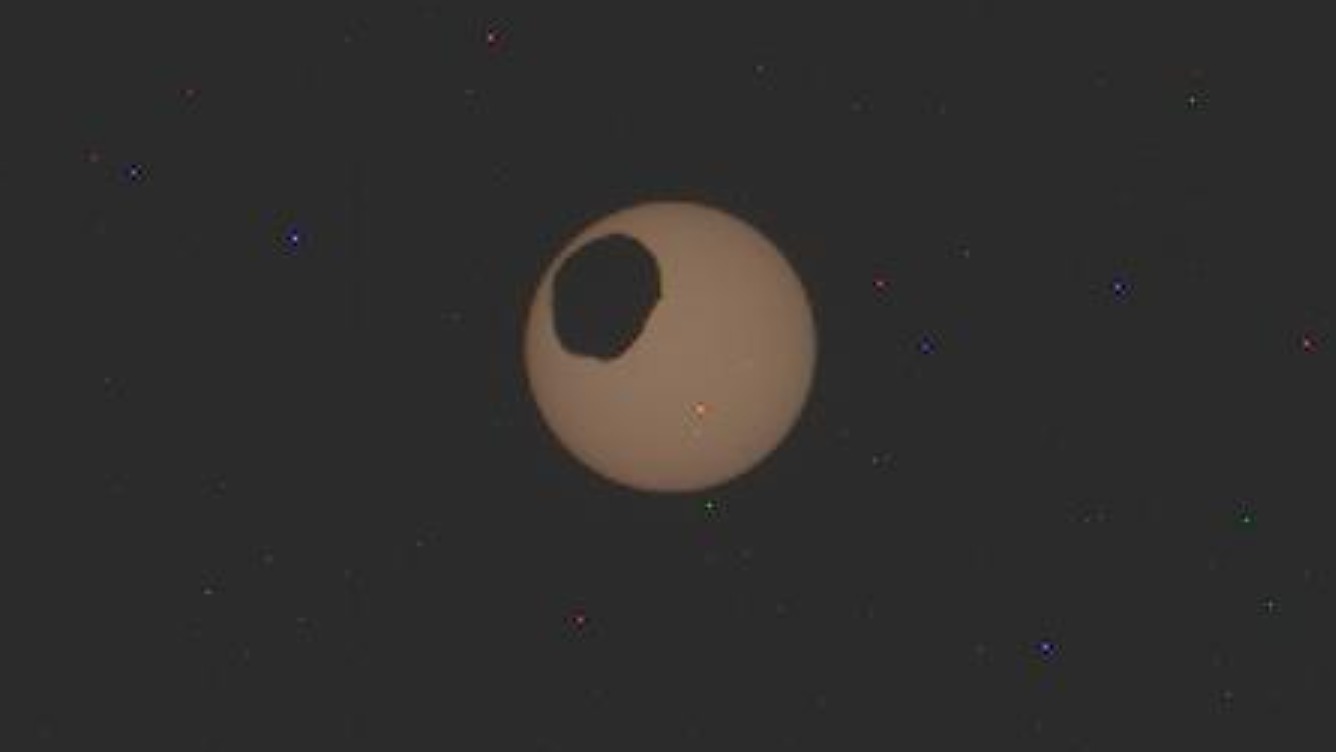Solar eclipse on Mars! Perseverance rover sees Martian moon Phobos cross the sun in epic video
"Fear" briefly darkened the sun.
Fear passed in front of the sun last week, and a NASA rover saw it fly.
The Mars moon Phobos, whose name means "Fear" in ancient Greek, was caught on camera by the NASA Perseverance rover on Feb. 8. The potato-shaped moon was visible in front of the sun from Percy's current perch in Jezero Crater.
Engineers from NASA's Jet Propulsion Laboratory (JPL) uploaded 68 images of the solar eclipse to their Perseverance raw images repository. The footage was filmed using the rovers left Mastcam-Z camera, one of two scouting imagers high on the neck-like mast of Perseverance often used to get sweeping landscape views of the Red Planet.
Related: NASA's Perseverance rover captures 360-degree view of Mars' Jezero Crater (video)

Phobos, first discovered by American astronomer Asaph Hall in 1877, is an asteroid-sized moon orbiting a few thousand miles (or kilometers) above the Martian surface and continuing to fall towards the planet. It should eventually break up due to the forces of the Red Planet's gravity.
Phobos and the other Mars moon, Deimos, have enigmatic formation histories: Scientists are not sure if they came from the asteroid belt, from collisions, from leftover debris from the early solar system or from some other scenario.
No spacecraft has been able to visit Phobos yet, although quite a few have performed flybys over the years. The Japan Aerospace Exploration Agency (JAXA), however, plans to send the Martian Moons Exploration (MMX) mission to Phobos in 2026.
Get the Space.com Newsletter
Breaking space news, the latest updates on rocket launches, skywatching events and more!
The big task of MMX will be sample return: Picking up dust from the wee moon and then bringing the grains back to Earth. The dust may provide more clues as to the formation history of Phobos, as well as that of the Martian atmosphere since molecules of gas fly into space and possibly, on to Phobos as well.
MMX may thus help unravel both mysteries of Phobos and Mars, as scientists are still trying to figure out why the Red Planet has lost so much of its atmosphere over the eons. The research has implications for habitability and water on Mars, as running water requires a certain degree of surface pressure. Perseverance's mission will also add to the mix, as it is hunting signs of ancient water and habitable conditions.
Like MMX, Perseverance is also a sort of sample return mission — but the rover will need help. NASA and the European Space Agency plan to send a Mars sample return mission to the rover's area in the 2030s to pick up samples for return to Earth. The program got a big blow last week, however, when JPL laid off many of its MSR employees due to ongoing budgetary woes.
MSR is going over schedule and budget due to its complexity, and NASA is operating under a continuing resolution freezing its spending at 2023 levels until Congress resolves the U.S. budget. The ongoing uncertainty forced JPL to lay off 8% of its workforce this month, laboratory officials have stated.
Join our Space Forums to keep talking space on the latest missions, night sky and more! And if you have a news tip, correction or comment, let us know at: community@space.com.

Elizabeth Howell (she/her), Ph.D., was a staff writer in the spaceflight channel between 2022 and 2024 specializing in Canadian space news. She was contributing writer for Space.com for 10 years from 2012 to 2024. Elizabeth's reporting includes multiple exclusives with the White House, leading world coverage about a lost-and-found space tomato on the International Space Station, witnessing five human spaceflight launches on two continents, flying parabolic, working inside a spacesuit, and participating in a simulated Mars mission. Her latest book, "Why Am I Taller?" (ECW Press, 2022) is co-written with astronaut Dave Williams.









